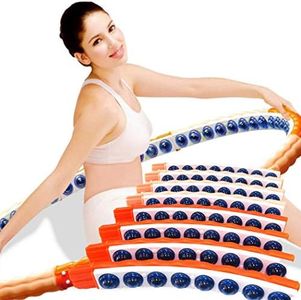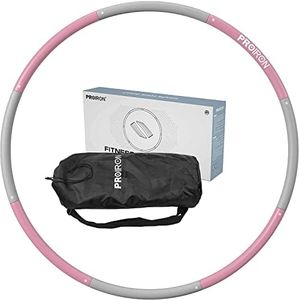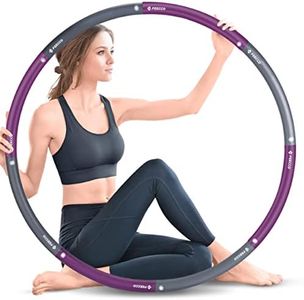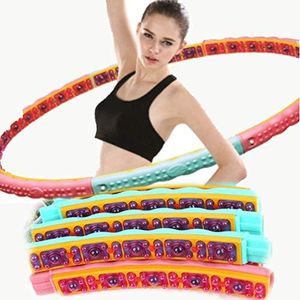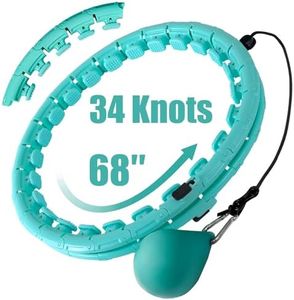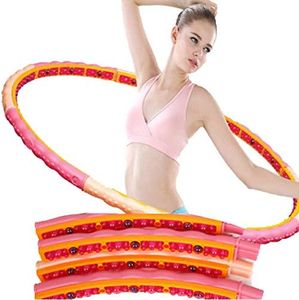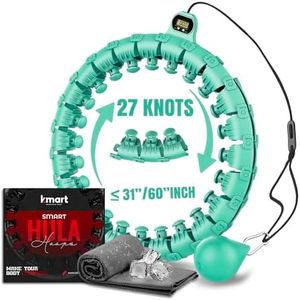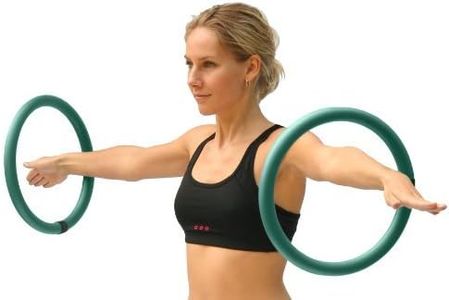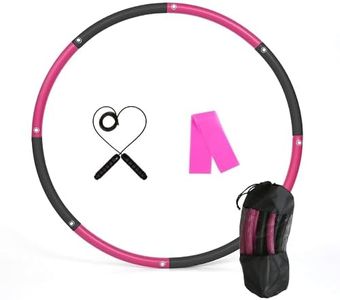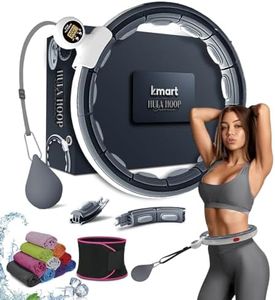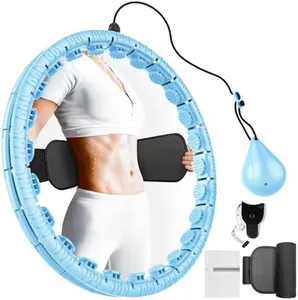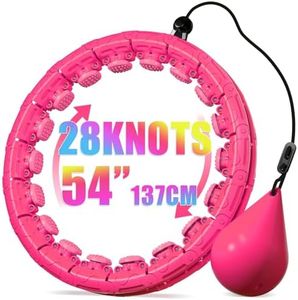We Use CookiesWe use cookies to enhance the security, performance,
functionality and for analytical and promotional activities. By continuing to browse this site you
are agreeing to our privacy policy
10 Best Weighted Hula Hoops
From leading brands and best sellers available on the web.Buying Guide for the Best Weighted Hula Hoops
Choosing the right weighted hula hoop is mainly about matching its size, weight, and construction to your fitness goals and comfort level. Weighted hula hoops are great for fun workouts, especially core strengthening and cardio. The best pick for you will feel comfortable during use, help you maintain a rhythmic movement, and challenge you without causing strain or discomfort. When comparing options, key specs like hoop diameter, weight, grip, material, and adjustability are worth understanding in depth.Hoop WeightHoop weight refers to how heavy the hula hoop is, and it has a big impact on your workout experience. Lighter hoops (around 1-2 pounds) are easier to spin and best for beginners or those focusing on longer, low-intensity sessions. Medium weights (2-3 pounds) offer a balance of ease and challenge, making them a popular choice for moderate fitness levels. Heavier hoops (over 3 pounds) make your muscles work harder but can be uncomfortable or cause bruising if you’re not used to them. Your ideal weight mostly depends on your fitness level and what you feel works best for you—if you’re new, start lighter, and if you want to intensify your workout as you become comfortable, you can slowly add more weight.
DiameterThe diameter of a hula hoop affects how fast it rotates and how easy it is to use. Larger hoops (around 38-44 inches in diameter) rotate more slowly, making them easier to control and ideal for beginners or taller people. Smaller hoops spin faster and are better suited to those with some experience or people who want a more challenging and dynamic workout. To choose the right diameter, try to find a hoop that, when stood on its side, reaches somewhere between your waist and chest.
Grip and PaddingGrip and padding determine how comfortable the hoop will be against your body and how easy it is to keep it spinning without slipping. Some hoops have foam padding or textured surfaces to prevent slipping and reduce discomfort. Unpadded hoops or those with a smooth surface may be harder to control and can cause skin irritation during longer workouts. For comfort and ease of use, look for a padded or textured grip, especially if you’re a beginner.
MaterialWeighted hula hoops are typically made from plastic, sometimes with a foam or rubber coating. The core material affects the hoop’s sturdiness, flexibility, and overall feel. Heavier, more durable plastics can make the hoop last longer and withstand rigorous workouts, while softer materials or extra padding add comfort. Focus on choosing a hoop made from sturdy materials if you plan to use it regularly, and consider extra cushioning if you want more comfort at the contact points.
Adjustability/AssemblySome hula hoops have an adjustable weight or sectional design so you can change their size or weight by adding or removing parts. This allows you to progress and customize your workout as you improve your strength and coordination. Sectional hoops are also easier to store or transport. If you value flexibility or expect your needs to change as you progress, look for adjustable or easy-to-assemble models.
